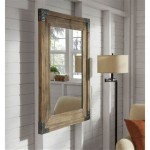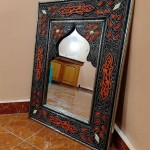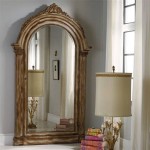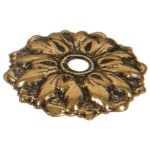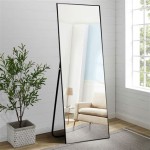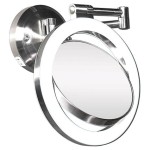Convex Mirror Image: Bigger or Smaller?
Convex mirrors, characterized by their outward curvature, are utilized in a variety of applications from security surveillance to automotive side mirrors. A fundamental property of these mirrors lies in their ability to manipulate light rays, resulting in distinct image characteristics. Understanding the relationship between the object and its reflection in a convex mirror requires an examination of the principles of reflection and the geometry of the mirror's surface.
Image Size: Always Smaller
A key feature of images formed by convex mirrors is their diminished size compared to the original object. This reduction in size is a direct consequence of the diverging nature of light rays reflected from the convex surface. As parallel rays of light strike the mirror, they reflect outwards, spreading apart. These diverging rays, when traced back virtually, appear to originate from a point behind the mirror. This point is where the image forms, creating a virtual, upright, and reduced image.
The degree of size reduction depends on the object's distance from the mirror and the curvature of the mirror itself. Objects closer to the mirror appear slightly larger than those farther away, although all reflected images remain smaller than the original object. This consistent reduction in size allows a convex mirror to reflect a wider field of view than a plane mirror of the same size, a significant advantage in applications requiring a broad perspective.
Virtual and Upright Images
Unlike concave mirrors, which can produce both real and virtual images depending on the object's position, convex mirrors always form virtual images. A virtual image is one that cannot be projected onto a screen. It appears to exist behind the mirror's surface because the reflected light rays do not actually converge at the image location. Instead, our eyes perceive the image by tracing the diverging rays back to their apparent origin.
Furthermore, images in convex mirrors are always upright. The orientation of the image remains the same as the object. This is in contrast to concave mirrors, which can produce inverted images when the object is beyond the focal point. The upright and virtual nature of the image contributes to the wide field of view provided by convex mirrors.
Field of View: Widened Perspective
Perhaps the most significant practical consequence of the smaller image size in convex mirrors is the resulting expanded field of view. Because the mirror reflects light rays outwards, it can capture light from a wider angle than a plane mirror or a concave mirror used in similar circumstances. This wider perspective allows the observer to see more of the surroundings reflected in the mirror, a crucial factor in diverse applications.
The increased field of view is particularly valuable in safety and security scenarios. Convex mirrors are frequently employed in stores to deter shoplifting, allowing a single mirror to cover a large area. Similarly, they are used in parking garages and on vehicles to provide drivers with a broader view of their surroundings, enhancing safety and maneuverability.
The curvature of the mirror directly influences the field of view. A more strongly curved mirror, with a smaller radius of curvature, will have a wider field of view than a less curved mirror. This relationship between curvature and field of view is a crucial consideration when selecting a convex mirror for a specific application.
The principles of reflection dictate the characteristics of images formed by convex mirrors. The diverging nature of the reflected rays leads to the formation of images that are invariably smaller, virtual, and upright. This combination of characteristics contributes to the wide field of view, making convex mirrors suitable for a range of applications where a broad perspective is paramount.
From enhancing road safety to improving security surveillance, the unique optical properties of convex mirrors make them an invaluable tool in diverse settings. Understanding these properties allows for effective utilization of these mirrors across a spectrum of practical applications.

Convex Mirrors And Objects Larger Than The Mirror
How Do Reflections From Convex Mirrors Make Objects Appear Smaller Quora

Convex Mirrors And Objects Larger Than The Mirror
Objects In The Mirror Are Actually Images Article Khan Academy
Objects In The Mirror Are Actually Images Article Khan Academy

Question Identifying The Maximum Size Of An Image Produced By A Convex Mirror Nagwa

Convex Mirror Image Formation Conditions Ray Diagram Uses
Can A Convex Mirror Form Magnified Image Quora

Convex Mirrors And Objects Larger Than The Mirror

Convex Mirrors And Objects Larger Than The Mirror

